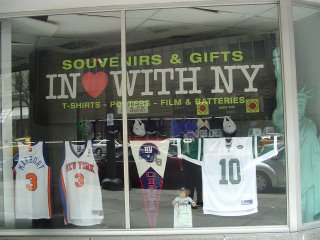I just saw a news article on MSNBC or was it Google News? Anyway, they mentioned a new (bathroom) hand dryer by Dyson. I was very surprised at this news. I thought all bathrooms around the world used these hand dryers.
 So I dug around a little and found out that these AWESOME hand dryers are not installed thoughout the world. I don't know anything about the Dyson version, but I love the Mitsubishi ones found here in Asia. If it was possible (financially) to have one installed in my house - I would have had one in my home bathroom a few years ago.
So I dug around a little and found out that these AWESOME hand dryers are not installed thoughout the world. I don't know anything about the Dyson version, but I love the Mitsubishi ones found here in Asia. If it was possible (financially) to have one installed in my house - I would have had one in my home bathroom a few years ago.
My young son was scared of them at first, because the air power is quite strong. But when drying your hands turned into a game you could not get him away from the unit. I actually like to keep my hands in it a bit longer myself. It is hard to resist something that feels like magic.
 Product description from Technovelgy website: A "powerful gust measuring 90 meters per second" pushes the water down into a place where the excess moisture is captured. According to the manufacturer, it takes about 5 seconds to dry your hands, as opposed to the 30 seconds or more for conventional models.
Product description from Technovelgy website: A "powerful gust measuring 90 meters per second" pushes the water down into a place where the excess moisture is captured. According to the manufacturer, it takes about 5 seconds to dry your hands, as opposed to the 30 seconds or more for conventional models.
Believe it or not, the first mention of using a blast of air to dry your hands is found in Coventry, a 1940 story by Robert Heinlein.
The new Dyson unit info (from Dyson on Google News edited): At almost $1,000 a pop when traditional hand blowers are available for around one fifth that cost? According to Dyson, it will save a business owner 80 percent on energy bills compared to the standard dryers, and 96 percent compared to buying paper towels.
The Airblade saves energy by using a new motor design that's capable of spinning at 120,000 rotations per minute, compared with normal electric motors in current dryers that crank at about half that. Also, because the unit doesn’t use evaporation, there’s no heat needed, which also cuts down on electricity.
Dyson launched into an anti-evaporation tirade. He accused the dryers we all know, which use heat and forced air to evaporate water from you hands, of creating a "cocktail of bacteria" on your flesh, which you then spread by touching the door handle on your way out. The Airblade, he said, avoids mixing such nasty cocktails in bar bathrooms by purifying air at the intake point with a HEPA filter, just like the one in fancy vacuums, and eliminating the need to rub your hands together, which apparently disturbs sleeping bacteria under your first layer of skin.
What about the water air-squeegeed from your hands? It is blown down into a small drain on the unit, and then goes through an iodine resin micro filter, which allegedly kills almost 100 percent of the bacteria draining down with it. Then, to eliminate the need for plumbing, the water drips onto a small gyrating plate that uses high frequency vibration to "atomize" it, and then expel it as a "harmless invisible mist."
Proof being in the pudding, I was eager to dip my hands in the fishbowl. The Airblade felt a lot like someone dragging two rubber window squeegees down the sides of my hands — but it worked. Some water did drip down the outside of the unit, but as Dyson’s chief microbiologist for the $18 million Airblade project told me, "you will lose a little, but it’s a lot better than the puddle of nasty water you get under a regular dryer."
All public restrooms — particularly those in bars — are occasionally made the workshop of graffiti artists and vandals, so I wondered how well such a technologically advanced piece of machinery would hold up to, say, someone grabbing hold of its tempting form and trying to pry it off the wall. As luck would have it, a couple of punk-rockers from the Soho streets had wandered into the Dyson press event and were bent on, as they tend to be, destruction and malevolence toward all things. They immediately targeted the unfamiliar units mounted on studio walls for journalist tryouts. I saw one of them pull, with all his strength, on an Airblade. He actually had to be pulled off the device and removed, along with his friend, from the event by Dyson staff. The Airblade, the exterior of which I then learned is constructed of 100 percent cast aluminum, did not bend or budge. According to Dyson’s General Manger of Communications, Mark Scanlon, the company hopes to make Airblades available to the U.S. market for testing by Yankee hand-washers and vandals alike, by the middle of 2007.
The longer I live in Asia the more I find out how behind the USA is in many advances and cool devices.



























